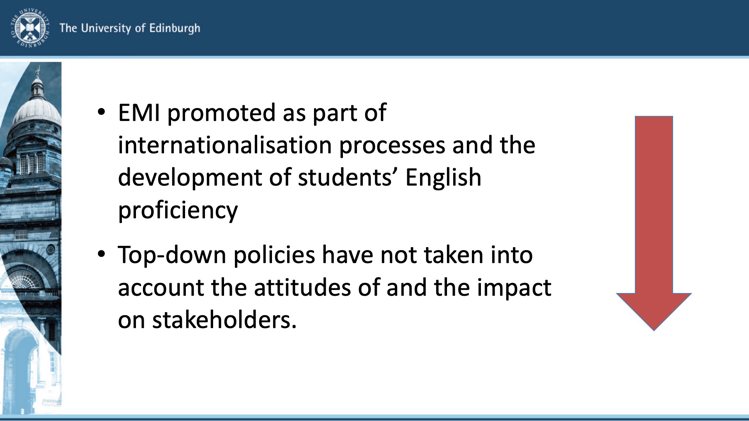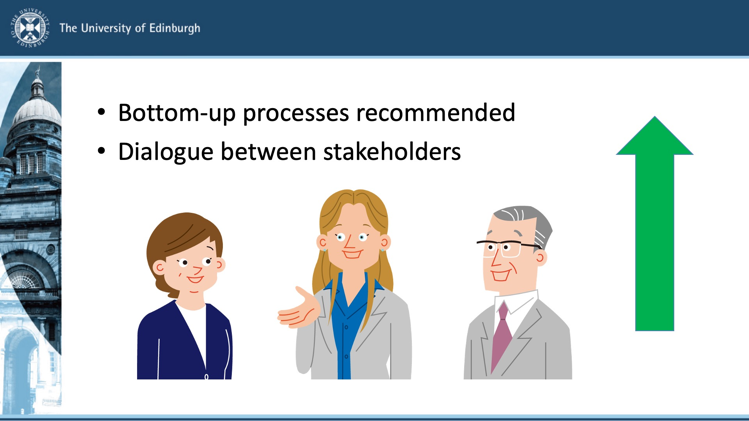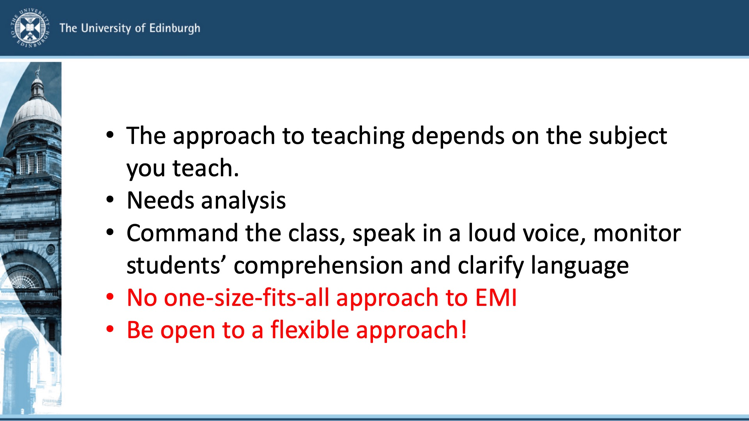Pre-lecture activity 1

Welcome to Lecture 9.

In this lecture, you will further explore how to incorporate Global Englishes into EMI by taking a curriculum perspective. Before proceeding to watch the lecture video, please familiarise yourself with the technical terms that will be referred to in the lecture. Please see below.
- Curriculum: a guideline of academic content to be covered by an educational system such as a school, college or university
- Syllabus: a document that consists of topics to be covered in a particular subject (narrower scope than that of a curriculum)
- Goals: what learners should achieve by the end of a course or programme
- Objectives: what learners need to know or to be able to do to reach the goals
- Skills-based syllabus: a document that informs learners of skills that they should develop in a particular subject (In English language learning, the word ‘skill’ commonly refers to the abilities to listen, read, write and speak in English)
- Formative evaluation: an evaluation that is conducted during a course or programme
- Summative evaluation: an evaluation that is conducted at the conclusion of a course or programme
Pre-lecture activity 2

Before proceeding to watch the lecture video, let’s recap some of the points that we studied in EA3.
Bottom-up practices
One of the points that we studied in EA3 was the inconsistency between the top-down policies and university/college level practices. Even if such policies promote EMI in higher education, its implementation and provision has to be tailored to local contexts.


(Source: Module 9, EA3)
The importance of considering contexts
Bear in mind that EMI is not a one-size-fits-all pedagogy. By this, Dr Galloway means that the way you teach depends on what you teach and what your students need. It is also important to note that English proficiency is not the one and only criterion in evaluating the implementation of EMI. The ability to command the class is, for example, another defining factor behind the successful implementation of EMI.

(Source: Module 6-2, EA3)